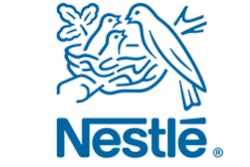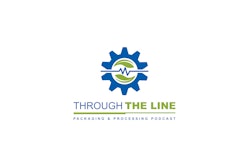When John Donne wrote “No Man Is an Island” in 1624, he probably wasn’t thinking about the need for teamwork, collaboration, and interdependence in modern manufacturing. He was clearly thinking about humans doing better together than in isolation. Yet, this especially holds true for manufacturers seeking to improve productivity by breaking down silos that result in isolation.
Time and again, we have seen functions in manufacturing that work in silos and, in really bad cases, islands. This can happen on the shop floor (e.g., maintenance vs. operations), at the corporate level (e.g., engineering vs. procurement), or between the two departments (e.g., OT and IT). The results are lost productivity and continued cultural dysfunction.
Among the most significant factors contributing to silos and islands are:
- No common vision, mission, purpose, and values—even if they are stated by the company. If key performance indicators (KPIs) and rewards and recognition systems are in conflict within different functions, it adds to the silo boundaries.
- No engagement of people at the right level to address and solve issues across the perceived boundaries.
- No common standard work processes to bridge the divide. Some people can bridge the gap with personality, but they are few and far between. Plus, it takes incredible effort.
Companies will often spend weeks, months, and lots of money creating mission, vision, purpose, and values programs. But once done, are they just statements posted on the wall or distributed in a memo, or are they truly deployed, discussed, and checked for understanding at all levels of the organization? Is alignment to a common purpose driven into all levels of the organization? If you’d like fewer boundaries to be a common North Star in your company, try asking a shopfloor worker who has been with the company for several years if he or she can cite at least half of your values and some parts of the company’s mission and vision, or at least the current strategic issue he or she is working on.
Once a company’s mission, vision, and purpose are set, lean manufacturing has processes to develop strategies, play catchball, and deploy execution from the shopfloor up to senior leadership. Two major tools to help do this and break down barriers are Hoshin Kanri for strategic planning and a floor management display system (FMDS) for improved productivity. Companies can spend lots of money hiring a sensei or building a lean culture that can drive improvement. So, why do we hear about just as many failures or false starts as we do successes, and why do so many companies see it only as a manufacturing or, worse yet, a “plant thing?”
When mission, vision, purpose and values, and lean processes work, we all hear about the incredible results that can be achieved. But why do so many companies struggle? The secret sauce is engagement!
PMMI’s OpX Leadership Network Workforce Engagement Model has 47 characteristics across three pillars to help drive success. Although it is written in terms of the workforce inside a plant, the model can be applied at any level of an organization. A specific example of a characteristic is Enablement: Skills: Self Awareness. We all have seen leaders who are not aware of how they create and strengthen silos and get others to entrench in a position.
Forty-seven characteristics are too many to bite off all at once, but there are a few that focus squarely on removing barriers. It is important that your team select and align with a few characteristics you want to focus on. These characteristics include:
- Empowerment: Desire: Team Contribution—To quote Mr. Spock, “The needs of the many outweigh the needs of the few…or the one.”
- Empowerment: Authority: To Hold Accountable (Self and Others)—I am going to do what I say I will do, and I am going to hold you accountable for doing what you say you will do, regardless of what function you are in.
- Enablement: Skills: Collaborative Thinking—Individuals don’t consistently come up with solutions on their own; they reach “across the aisle” and collaborate on a solution.
- Enablement: Resources: Information—For example, a salesperson hears a customer concern related to production and makes up an answer to appease the customer, but never asks the plant to fix it. If the same problem happens again, the customer and the salesperson are now more frustrated and begin to refer to the plant as “those people,” putting a new brick in the silo wall.
- Connection: Fit: Culture—Does your culture drive compliance (have to) or commitment (want to) in working across boundaries? The first is the minimum and has to be managed daily. The second is self-managed and taps into an employee’s discretionary effort.
- Connect: Communication: Goals and Objectives—Goals and objectives are balanced between metrics, performance, and personal development, and encourages all to cross boundaries of function and level to achieve success.
Case in Point
FSO Institute reached out to Russ Bennett, plant manager at Flagstone Foods, regarding a recent challenge he faced due to silo thinking and what he did to break down those silos for improved productivity.
FSO Institute: Russ, you recently were involved in a particular situation where productivity was being impeded due to lack of communication, protection of territory, and fear of sharing information. Can you briefly share that story, highlighting the steps you took to overcome these engagement challenges?
Russ Bennett: I was the plant senior production manager at the time, and we were having major quality and throughput issues to the level that they were jeopardizing our relationship with a major customer. The departments within the plant, and even some leadership outside the plant, were not working in concert to deliver the required results. They were more concerned about their individual functional results, which created friction and took away from the energy of the whole facility to move forward.
We hired some engagement coaches from FSO Institute who worked with and taught us not only the lean FMDS process, but how servant leadership within this process can drive characteristics like communication, accountability for self and others, common vision, and cultural fit. We are continuing to learn how to apply the programs as a tool rather than a task in our continuous improvement efforts across all areas. We lost some people along the way because they were not a right fit, but we came out stronger at the end, and our retention has been steadily improving when most organizations are struggling to maintain employees. The beauty of what we have done has not only greatly accelerated our cultural growth and results while the coaches were here, we have continued to improve after they left.
That major customer I talked about is now very happy to see the organizational growth and improvements. If you don’t treat the processes and servant leadership as just a program or a task, and rather as a tool to guide the way you operate, sustainment and continued growth will follow. We are a far cry from perfect, but as a team, we utilize the tools we have learned to help guide us to strive to be a little better each day, create wins for those we serve, and bring ever-increasing value to our team and our customers.























